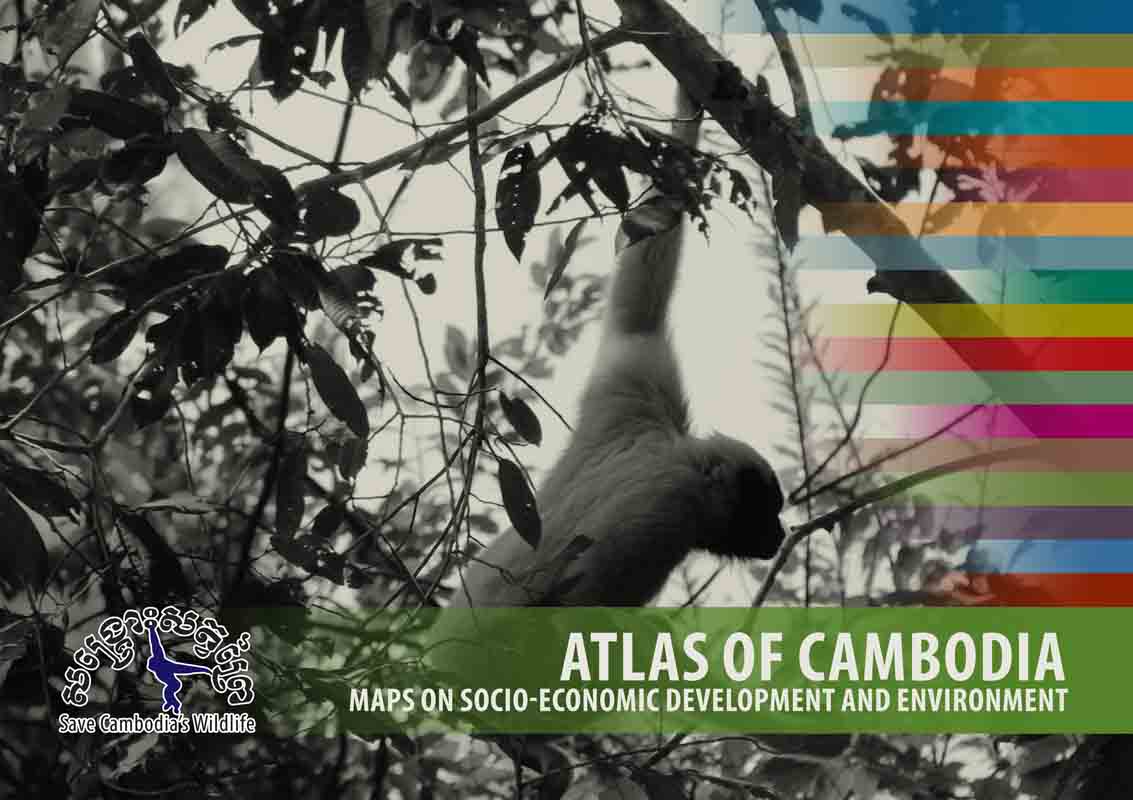In 2006 Save Cambodia’s Wildlife (SCW) published the first edition of its Atlas of Cambodia. This book provided a snapshot of the key demographic, economic and environmental trends in the Kingdom, as they existed at the time. With nothing similar available the publication quickly became a mainstay of many professional libraries. But that was a long time ago and things have changed immeasurably in the Kingdom, which means a review has become increasingly important. Pleasingly and to their credit, SCW have responded to this challenge and published a vastly larger and improved version (price TBC) launching at Meta House this week. Their effort is our gain: the 2014 version goes well beyond a simple update and offers new insights into the developments and trends that characterise contemporary Cambodia.
There are some key changes. While the previous Atlas limited itself to a narrow range of topics, the new version covers many more subjects: travel from chapters devoted to ‘Forests’ and ‘Biodiversity’ through to ‘Gender’ and ‘Energy’. The portrait format has also gone, replaced by a landscape imprint. This better suits the geographic shape of the Kingdom when it comes to depicting it on a map, allowing a single drawing of the country to sit comfortably on an entire page.
This permits more information to be put onto the maps themselves. An example is the minute detail, almost to the district in some locations, given to certain measures including, at one point, pig, poultry and cattle ownership (OK, I can hear you say: ‘Wayne, why exactly is this important?’ Well, livestock ownership is often a good indicator of rural family wealth). Another key change is the provision of more descriptive detail, such as the background content on global and regional climate zones and the impact of climate change, which strengthens understanding of what the maps, graphs and statistics in the Climate chapter imply for the country.
A further plus is an increased effort to place national trends in a regional context. Returning to climate change and the vexing question of human impact, a map has been included that illustrates Cambodia’s climate vulnerability in comparison to that of its East Asian neighbours. It’s enlightening, with the shades of the map clearly showing that, alongside the Philippines, the Kingdom is the most climate-change vulnerable nation in the region.
One particular detail stands out for me: two Landsat images of Phnom Penh that serve as a powerful symbol for the change that has occurred in the nation since publication of the original Atlas. The first provides a satellite image of Phnom Penh in May 2003 and is compared to an image taken from the same angle in May 2013. The differences are striking.
In the most recent image Boeung Kak lake is gone, of course, but so too are some lesser known but – judging by their size in the 2003 image – even larger lakes on the northern outskirts of the city. These, like Boeung Kak itself, have historically acted as hydrological bulwarks against flooding, so the implications for the future dry (or will they be webbed?) feet of the capital’s citizens is worth considering (climate change vulnerability, anyone?). The sheer expansion of the urban buildings depicted in the 2013 image is fascinating if not unnerving: Phnom Penh today appears double the size it was in 2003. Looking at this one is left to wonder what Ms Penh, the legendary founder of the capital, would make of her creation today, a question that is as difficult to answer as one that ponders what Phnom Penh might look like in a further ten years.
Finally, in another constructive addition, a complimentary website will permit online access to the publication’s different map layers, even allowing users to work with the charts themselves and add new information layers. New and improved, the Atlas of Cambodia, available at Monument Books, is a must for anyone serious about working in the Kingdom or seeking to understand it further.
WHO: Save Cambodia’s Wildlife
WHAT: Atlas of Cambodia book launch
WHERE: Meta House, #37 Sothearos Blvd.
WHEN: 6pm January 31
WHY: Make sense of modern Cambodia
